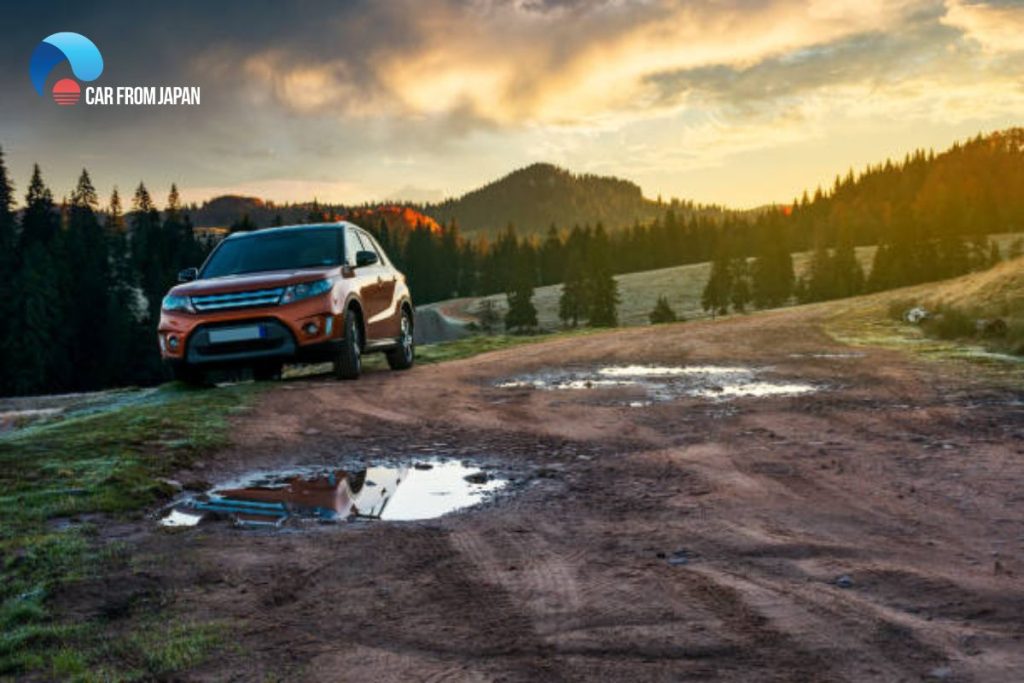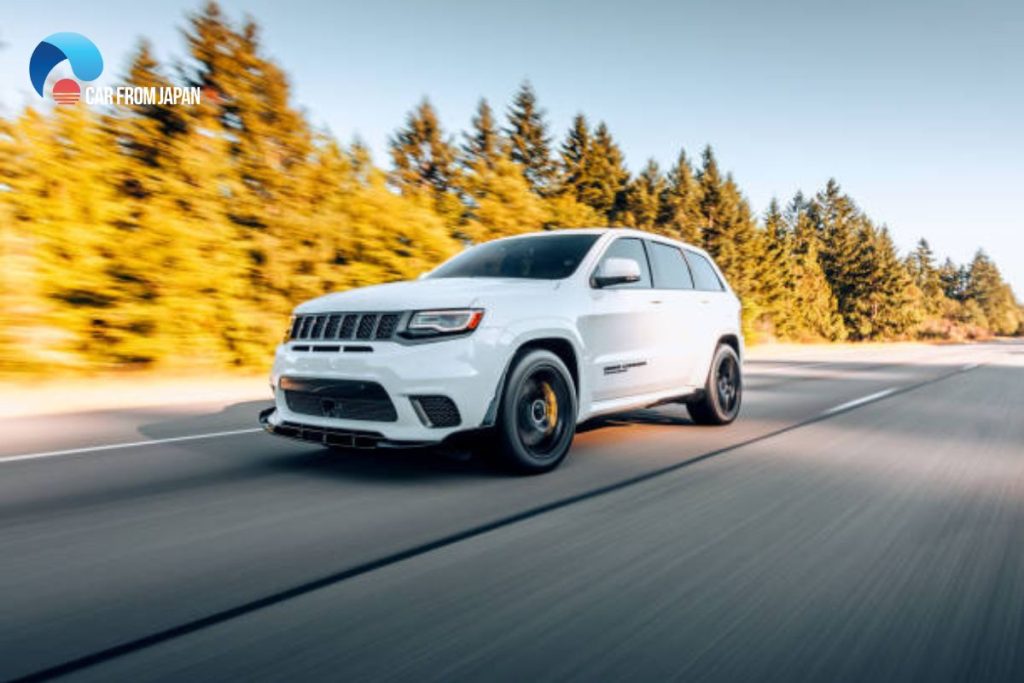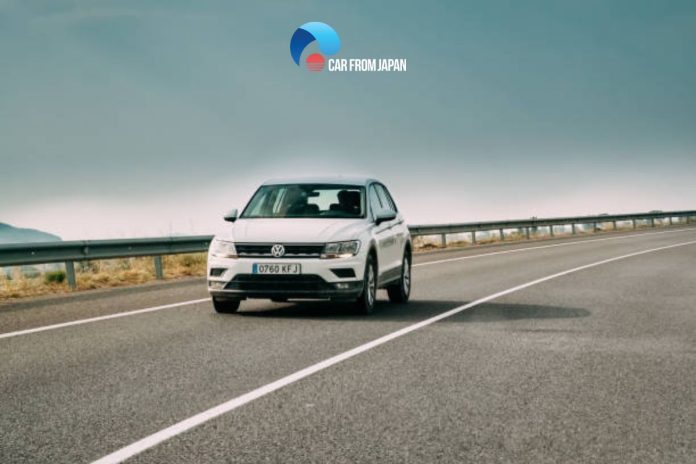The debate about whether driving in 4 wheel drive on highway is safe is a common one among vehicle owners. You might think more traction is always better, but that’s not quite the case, especially on surfaces where your tires already have good grip. To make everything clear, we’ll explore why and when it’s appropriate to use 4 wheel drive vehicles on the highway safely.
Contents
Everything To Know About 4WD (Four-Wheel Drive)
Four-wheel drive and all-wheel drive are common features of modern crossovers and SUVs. These two car terms are incorrectly used interchangeably. They are considerably different, except for the general similarity is that all four wheels receive power from the engine.
Four-wheel drive is popular in trucks and SUVs such as the Jeep Wrangler and the Toyota Land Cruiser, heavy-duty vehicles meant for wilderness exploration on tough, bumpy, or low-traction tracks.
Most 4WD systems are part-time systems that can be used when required and then disabled, putting the vehicle in two-wheel drive.
In a 4WD system, each wheel will spin at the same constant rate as all the others. This will better ensure the car’s stability and traction on slippery, tough, and uneven ground when driving off the beaten path.
In contrast, using 4WD on regular roads is not ideal. For instance, when the 4WD car does a U-turn, the outside wheels have more ground to cover and thus have to turn faster than the inside wheel, making the car hop or creating a rubbing noise when you approach full lock.
In short:
When to use 4WD:

- Off-roading.
- If the terrain is wet or slick.
- When hauling or towing uphill or downhill.
- In rainy or snowy conditions.
When not to use 4WD:
Traveling in 4WD on flat, smooth, dry roads is not recommended, as it will damage your drivetrain. Also, remember that four-wheel drive provides more torque and engages all the tires for movement, thus it doesn’t help you stop. Always travel at speeds that allow you to stop safely.
While technically driving in 4-wheel drive on highways is possible, it is only relatively safe in certain conditions. Read on to find out.
Important note: Handling
4WD doesn’t help you brake better or give you more stability in turns while braking. So slow down when you’re turning and brake sooner.
Note that while you can use 4WD in rainy or snowy conditions, 4WD doesn’t improve handling on slick ice- and snow-covered roads. If you drive faster than conditions allow, you’re far more likely to flip and roll because of your higher center of gravity.
Important note: Gas mileage
When you’re in 4WD, you’re engaging a lot more extra gears and driveshafts and keeping them spinning to create enough horsepower to rotate four wheels, not just two. This eats up more fuel than 2WD, which lowers your gas mileage. If you don’t need 4WD, turn it off and save some dough at the gas pump.
In addition, this also means you’re putting excess pressure on your 4WD drivetrain, differential case, and gears. Fixing all those parts would be very expensive so ideally, you want to avoid engaging the 4WD mode unless road and driving conditions really require it.
Different Settings for 4WD
1. Four-High (4H)
In high-range 4WD, you can travel at all normal speeds. Simply put, 4H is used for driving at normal speeds when you need extra traction.
Engage in this setting when you’re on the highway and wet, snowy, icy roads. It’s also good for level, loose-gravel roads, packed sand or mud.
2. Four-Low (4L)
The low-range 4WD setting is for the serious stuff: deep sand, snow, mud, crossing water, climbing rocks, and ascending/descending hills.
When you use four-low, keep your speeds low, under 40 mph or so, as you’re not actually gripping the road any better, but you’re applying more torque to that grip. Designed for maximum traction and maximum power, the wheels will turn more slowly in 4L than 4H.
3. Automatic Four-Wheel Drive
Use this setting when roads are variable, such as patchy snow and ice or any other combination of conditions, when a tire could slip suddenly. In this convenient setting, the vehicle monitors tire traction while in two-wheel drive and automatically shifts into four-wheel drive when one of them begins to slip.
Important note
When shifting from two-wheel drive to automatic four-wheel drive or four-high, you can do so while continuing to travel at normal speeds. When shifting into and out of four-wheel-drive low, however, it is best practice to come to a stop and wait for the indicator light to stop flashing.

When to use 4H and 4L
Knowing when to use 4H or 4L is what causes the most confusion for 4WD vehicle owners, so here are some rules.
When to Use 4L:
- When you need more torque (power) for heavy pulling at slow speeds.
- When you’re climbing steep grades at slow speeds and need extra power.
- When you’re descending steep hills with a heavy load, low gearing provides engine braking assistance.
- Don’t use 4LO to get unstuck in mud and snow. The extra torque will cause the tires to spin.
When to Use 4H:
- When you’re on slippery surfaces and driving at street or highway speeds.
- When you’re stuck in snow, mud, or ice.
Driving In 4 Wheel Drive On Highway: Can You and Is It Safe?
4WD increases your traction. That’s important in the case of snowy, icy, or wet roads, or when you’re moving a heavyweight on a steep grade. These are the instances when you need to engage 4WD.
Although technically, you could drive in 4WD on any paved road, 4WD is generally not an ideal mode to use while driving on dry, flat, level roads. The problem here is that you’ll be locking the differential between your wheels, so all four wheels will be turning at the same speed.
That is very dangerous when you’re moving at high speed on the highway and trying to turn. Turning requires the wheels on either side to move at different speeds: the outer wheels have to cover a longer distance, thus they will have to rotate faster.
So, driving in 4-wheel drive on the highway: can you? Yes, technically you can use 4WD on the highway, but if you do, make sure it’s 4H four-wheel drive. Using 4H, you’ll get all the traction you need so you can safely reach your destination at a reasonable speed.
Do not ever use 4L four-wheel drive while driving at highway speeds. Remember that 4L simply means using lower gears in 4WD mode. If you try to use 4L, you’re going to reach high RPMs without gaining much speed, which is not good for your vehicle at all.
In addition, in most vehicles, if you’re already on the road at a certain speed and the conditions suddenly change, you can switch to 4H four-wheel drive while maintaining your speed. Meanwhile, with a 4L four-wheel drive, you must slow down significantly or even stop.
In short, while you can use the four-wheel drive in inclement weather for highway driving, you should not use it in good weather conditions. In addition, when you do need to engage four-wheel drive on highways, make sure it’s a 4H setting.
As mentioned above, driving in 4-wheel drive on a highway at a high speed is only safe on straight routes. Any turning at high speeds could be extremely dangerous.
Watch more:
Bonus Tips: How To Maintain 4WD System
When using 4WD, you’re putting excess pressure on your 4WD drivetrain, differential case, and gears. Fixing these parts would be very expensive so ideally, you want to avoid engaging the 4WD mode unless road and driving conditions require it. This will keep your 4WD system in good shape.
In addition, 4WD systems work best and last longest when they’re used regularly and maintained according to factory recommendations. When a 4WD system sits unused for months at a time, the linkage and hub components seize, the seals dry out and the lube drains off gears.
Learn how to maximize the life of your four-wheel drive system and drive safely:
Regular operations
The best way to keep all 4WD components lubricated and in good operating condition is to engage your 4WD at least once every few months on wet pavement, best in a parking lot when no one’s around.
Tire size & tire rotation
The front, center, and rear differentials in 4WD vehicles are designed to compensate for their shortcomings when turning a corner or changing lanes. Mismatched tires, whether they’re a different size or a different tread depth, will force the differentials to operate full-time even if you’re going straight down the road.
Such overworking will lead to excessive heat and cause premature wear that can cost thousands of dollars in repairs. A difference in tread depth of just 1/16 inch among tires is enough to cause early failure of the system.
Premature failure also occurs in the case of different tread brands, tread patterns and even different rubber compounds, since they can result in different traction rates between the tires. Therefore, avoid mixing different brands or tread patterns on your 4WD vehicle.
Another maintenance tip is that front tires wear faster than rear tires because they carry more weight and perform more braking and turning. Therefore, it is recommended that you rotate your tires every 5,000 to 7,000 miles to even out tire wear and minimize 4WD differential operation.
Fluid changes & Lubrication
As mentioned above, lubrication is important. Follow your owner’s manual for differential and transfer case fluid changes, even if you don’t use your 4WD very often, and don’t forget to grease drive-shaft slip joints and U-joints.
Final Thoughts
So, can you drive in 4-wheel drive on the highway? Our answer is Yes. However, use it when the conditions call for extra traction (like on slippery roads), but switch it off on dry highways if your car requires it.
Remember, 4-wheel drive isn’t magic. It helps you go, but it doesn’t help you stop much faster or steer better on pure ice. You still need to slow down and drive very carefully for the conditions.



